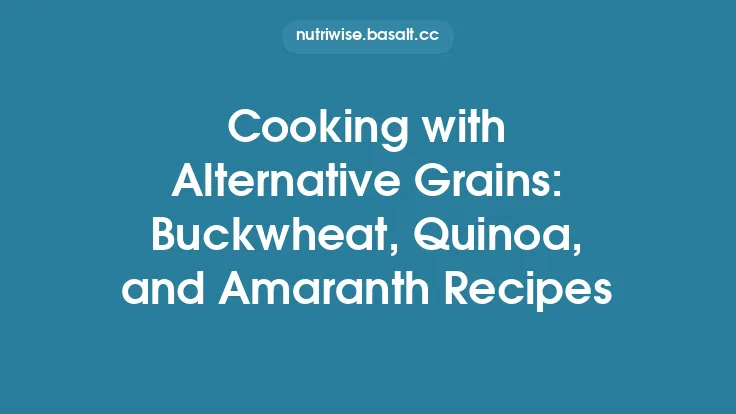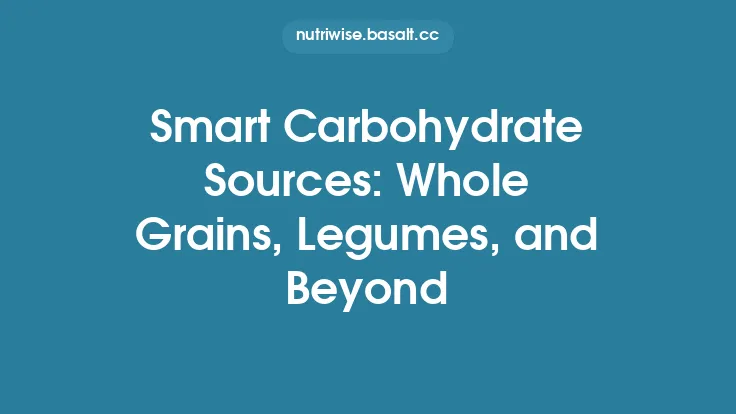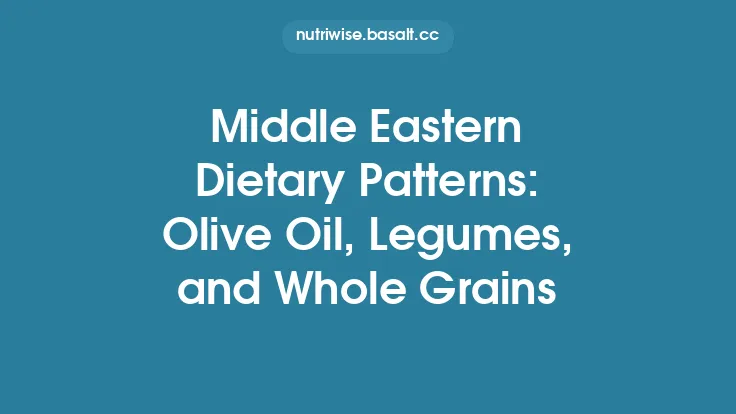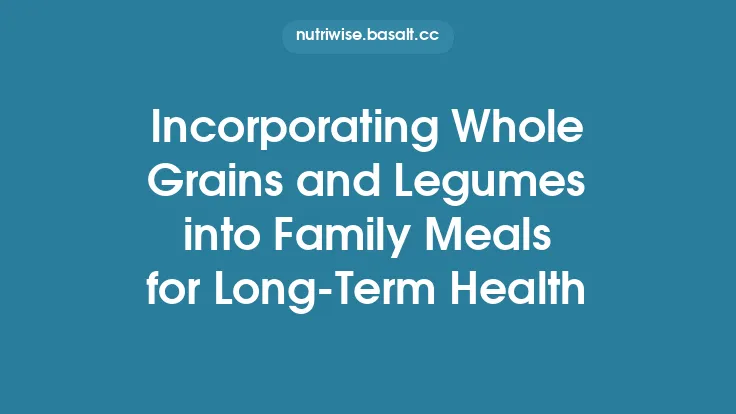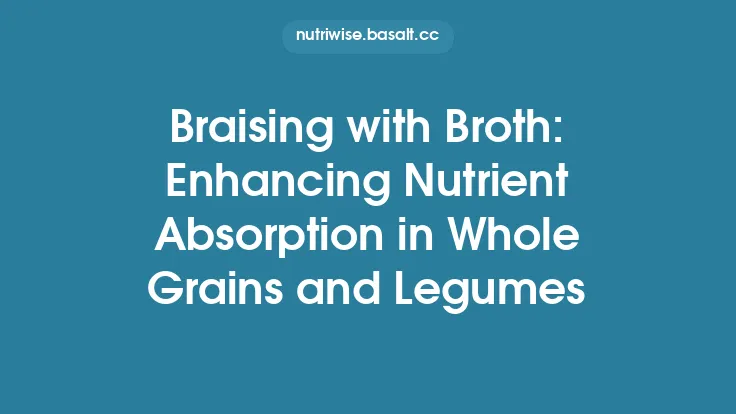Whole grains have long been celebrated for their fiber, vitamins, and minerals, but their protein contribution often flies under the radar. Among the most protein‑dense options are three ancient staples—quinoa, amaranth, and farro—that combine robust nutritional profiles with versatile culinary uses. Understanding how these grains stack up in terms of protein quality, cooking methods, and environmental impact can help anyone looking to build a more sustainable, plant‑based diet without sacrificing nutrition or flavor.
Nutritional Profile of Quinoa
Quinoa (pronounced *keen‑wah*) is technically a pseudocereal, meaning it is botanically a seed but culinarily treated like a grain. A 100‑gram serving of cooked quinoa delivers roughly 4.1 g of protein, 2.8 g of fiber, and a balanced mix of essential micronutrients such as magnesium, phosphorus, manganese, and folate. What sets quinoa apart is its relatively high protein density compared with most true cereals; it contains about 14 % of its dry weight as protein.
The protein in quinoa is composed of all nine essential amino acids, making it a complete protein source—a rarity among plant foods. Its lysine content, in particular, is noteworthy because lysine is often limiting in cereal grains. The grain also supplies a modest amount of branched‑chain amino acids (leucine, isoleucine, and valine), which are important for muscle protein synthesis.
From a glycemic standpoint, quinoa has a low to moderate glycemic index (GI ≈ 53), meaning it raises blood glucose more slowly than refined grains. This property, combined with its protein and fiber, contributes to prolonged satiety and steadier energy levels.
Understanding Amaranth’s Protein Power
Amaranth, another pseudocereal, has been cultivated for millennia in the Andes and parts of Africa. When cooked, 100 g of amaranth provides about 3.8 g of protein, slightly less than quinoa but still impressive for a grain. Its protein content translates to roughly 13 % of the dry weight.
Amaranth’s protein is distinguished by a high proportion of the sulfur‑containing amino acids cysteine and methionine, which are typically low in other grains. This makes amaranth especially valuable for supporting antioxidant pathways (via glutathione synthesis) and for overall protein quality. Like quinoa, amaranth is considered a complete protein, though its lysine levels are modest compared with quinoa.
Micronutrient-wise, amaranth shines with iron (≈ 2.1 mg per 100 g cooked), calcium (≈ 10 mg), and zinc (≈ 1.0 mg). Its high calcium content is unusual for a grain and contributes to bone health, especially in vegan diets where dairy is limited.
Amaranth also contains a notable amount of squalene, a phytochemical with potential anti‑inflammatory properties, and a range of phenolic compounds that may confer antioxidant benefits.
Farro: A Hearty Grain with Surprising Protein
Farro is a collective term for three ancient wheat species—*spelt (Triticum spelta), emmer (T. dicoccum), and einkorn (T. monococcum*). While technically a true cereal, farro’s protein content rivals that of the pseudocereals discussed above. A 100‑gram serving of cooked farro supplies about 4.0 g of protein, with a dry‑weight protein proportion of roughly 12‑13 %.
Farro’s protein profile is not complete on its own; it is relatively low in lysine, a pattern typical of wheat‑based grains. However, its high levels of glutamine and arginine support gut health and immune function. The grain also offers a robust mineral suite: magnesium (≈ 70 mg), phosphorus (≈ 150 mg), and selenium (≈ 30 µg), the latter being essential for thyroid hormone metabolism.
From a fiber perspective, farro provides about 3.5 g per 100 g cooked, contributing to digestive regularity and cholesterol management. Its chewy texture and nutty flavor make it a popular addition to salads, soups, and grain bowls.
Comparing the Amino Acid Completeness of These Grains
When evaluating protein quality, the concept of *protein digestibility‑corrected amino acid score* (PDCAAS) is often used. Quinoa typically scores around 0.78–0.85, amaranth around 0.70–0.78, and farro (depending on the species) scores near 0.55–0.65. These numbers reflect both the amino acid composition and the digestibility of the protein.
- Lysine: Highest in quinoa, moderate in amaranth, lowest in farro.
- Methionine + Cysteine: Amaranth leads, followed by quinoa, with farro trailing.
- Leucine, Isoleucine, Valine: All three grains provide comparable amounts, supporting muscle maintenance.
While none of the grains alone matches the PDCAAS of animal proteins (which can reach 1.0), their combined use—especially when paired with legumes or nuts—creates a complementary amino acid profile that meets or exceeds daily requirements for most adults.
Cooking Techniques to Preserve Protein Quality
Heat can denature proteins, but it also improves digestibility by breaking down anti‑nutritional factors such as phytic acid. Here are best‑practice methods for each grain:
- Rinsing and Soaking: All three grains benefit from a quick rinse to remove saponins (particularly in quinoa) and surface dust. Soaking for 4–6 hours (or overnight) reduces phytic acid, enhancing mineral absorption and protein digestibility.
- Water Ratio and Simmering:
- *Quinoa:* 1 part quinoa to 2 parts water; simmer 15 minutes, then rest 5 minutes.
- *Amaranth:* 1 part amaranth to 2.5 parts water; simmer 20–25 minutes.
- *Farro:* 1 part farro to 3 parts water; simmer 30–40 minutes (or pre‑soak to shorten time).
Using a tight‑fitting lid retains steam, ensuring even gelatinization of starches without over‑cooking the protein matrix.
- Gentle Fluffing: After cooking, use a fork to fluff rather than a vigorous stir, preserving the grain’s structural integrity and preventing protein loss into the cooking water.
- Toasting Before Cooking: Lightly toasting quinoa, amaranth, or farro in a dry skillet (2–3 minutes) adds a nutty depth and can further reduce anti‑nutrients, marginally improving protein availability.
Incorporating Quinoa, Amaranth, and Farro into Everyday Meals
- Breakfast Bowls: Combine cooked quinoa with plant‑based yogurt, fresh berries, a drizzle of maple syrup, and a sprinkle of toasted nuts for a protein‑rich start.
- Salads and Grain Bowls: Mix cooled amaranth with chopped vegetables, chickpeas, and a lemon‑tahini dressing. The small, slightly sticky texture of amaranth makes it an excellent binder.
- Hearty Soups: Add farro to vegetable or bean soups for added body and protein. Its chewiness holds up well during long simmering.
- Baked Goods: Substitute a portion of wheat flour with quinoa or amaranth flour in muffins or pancakes to boost protein without compromising texture.
- Stir‑Fry Bases: Use quinoa as a neutral base for Asian‑style stir‑fries, pairing it with tofu, broccoli, and a soy‑ginger glaze.
Portion control is straightforward: a typical serving is ½ cup (dry) of each grain, yielding roughly 8–10 g of protein after cooking. Pairing with a modest amount of legumes, nuts, or seeds can easily push a meal past the 20‑gram protein threshold recommended for many active adults.
Sustainability and Ethical Considerations of Whole Grain Production
While the focus here is on nutrition, the environmental footprint of these grains is an integral part of the “Sustainable & Ethical Eating” narrative.
- Quinoa: Grown primarily in the Andean highlands, quinoa thrives in poor soils and requires minimal irrigation. However, surging global demand has led to concerns about land use pressure and price spikes for local farmers. Supporting fair‑trade certified quinoa helps ensure that growers receive equitable compensation and that cultivation practices remain environmentally sound.
- Amaranth: This resilient crop tolerates drought and saline conditions, making it a valuable option for marginal lands. Its short growing season (≈ 90 days) reduces the need for synthetic fertilizers, lowering greenhouse gas emissions per kilogram of protein produced.
- Farro: As an ancient wheat relative, farro is often cultivated using low‑input, organic methods, especially in Mediterranean regions. Its deep root system improves soil structure and carbon sequestration. Choosing locally sourced farro reduces transportation emissions and supports regional agricultural heritage.
Overall, these grains have lower water footprints and greenhouse gas outputs compared with animal‑based protein sources, aligning well with climate‑friendly dietary goals.
Potential Allergens and Digestibility Concerns
- Quinoa: Although gluten‑free, quinoa can trigger reactions in individuals sensitive to saponins or to the protein *chenopodin*. Rinsing thoroughly mitigates saponin exposure.
- Amaranth: Generally well tolerated, but rare cases of amaranth allergy have been documented, often presenting as oral allergy syndrome.
- Farro: Contains gluten, making it unsuitable for those with celiac disease or non‑celiac gluten sensitivity. For gluten‑free diets, quinoa and amaranth are the safer choices.
All three grains contain moderate amounts of resistant starch, which can cause mild gastrointestinal discomfort (bloating, gas) in people unaccustomed to high‑fiber diets. Gradual introduction and adequate hydration help the gut microbiota adapt.
Bottom Line
Quinoa, amaranth, and farro each bring a unique blend of protein density, amino acid composition, micronutrients, and culinary flexibility to a plant‑based diet. By understanding their nutritional nuances, employing cooking methods that preserve protein quality, and considering the sustainability of their production, you can confidently incorporate these whole grains into meals that are both health‑promoting and environmentally responsible. Whether you’re building a nutrient‑dense breakfast bowl, a satisfying grain‑based salad, or a comforting soup, these ancient grains prove that protein‑rich, ethical eating doesn’t have to be complicated—just a matter of choosing the right staples and preparing them with care.
